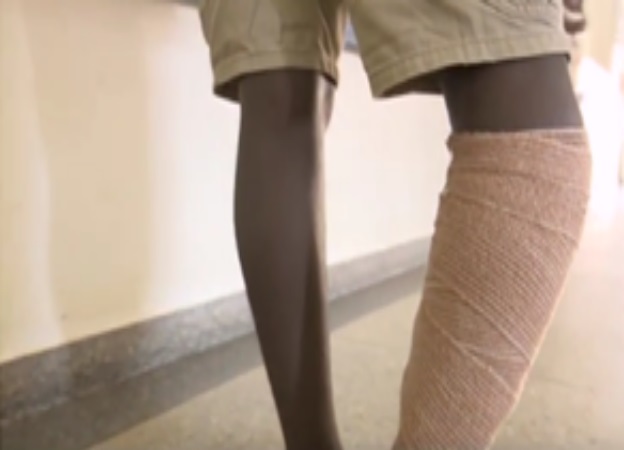Some toddlers have bow legs but often the disorder fades away as they grow older. However, in a few incidents the condition worsens. Serin Ankunda at two was noticed by the mum to be having bow legs. At seven, she continued to be inflicted by the condition. Her mother took her to the Comprehensive Rehabilitation Services Uganda offices CORSU. “When I noticed the bow legs, I thought they would straighten on their own because some relatives have them. But she is grown and they are still there.” Said, Rose Arinaitwe – Serin’s Mother. Her last born who was 15 months old also had bow legs, she said she would wait until he was about four to see if he didn’t outgrow them. She feared the disorder in the family could be genetic. “The type of bowed legs that she has is a Blount’s disease and there are some associations; genetic factors that are usually associated to this kind so you can find it running within the family.” Said, Dr. Moses Muhumuza – Orthopedic Surgeon, CORSU. “We have what you call the growth plates; a place where the growth of the bones starts from. And as the body is growing, these growth plates are supposed to grow uniformly, so on one side you find that the growth is not as uniform as the opposite side. So as it is not uniform on the opposite side then one side is growing faster than the other and so the part that is growing slower tends to become shorter and then the part that is growing faster tends to become longer and so causing the curve that we get to see. If it’s happening on the inside of the knees then it results in bowed legs, if it's happening on the outside of the knees then it becomes the knock knees.” “We have scenarios where people come in with the knees at almost 90o or 100o. They become short by default because you have taken away a significant amount of height from them and then they have associated problems like pain, early joint Arthritis, swelling of the knees and very much distorted anatomy within the knees.”
Dr. Muhumuza said there were no early signs of this affliction. “When the baby is diabetic chubby but then when they reach the ages of about two they become lean and start to grow in height. And because when you have the accelerated growth in height that’s when you get to see the symptoms.” Rickets could also masquerade as Blount’s disease but the treatments were different. “For example, they have the swelling of the wrists, they have the swellings of the knees, they have the swelling of the head and also in the chest, the bones and also those different things and for the case of rickets; it can actually be seen as early as six months.”
The doctor said of the patients they attended to at CORSU hospital, 14% had bow legs but was the condition preventable? “No, not really.” For patients like Serin, doctors opted for surgery. “You get the normal bone and then you break it in the form of, you can either use what we call an Orthopedic Saw to cut it open or we can drill holes to weaken it and that will allow us to correct deformity accurately. And then after that is done, we have to stabilize it or keep it in place in a position that we actually want and that is when we apply what is called an external fixator; we put the pins that come to the outside of the body. It’s a much more forgiving kind of fixation because the chances of it being infected reduce quite significantly.”
Serin would be in the hospital for a few more days to get her Physiotherapy started because she needed the treatment before her joints were lavished by the disease. Doctors would continue to review her as they looked at the X-rays to determine when it was the right time to take off the external fixator.

